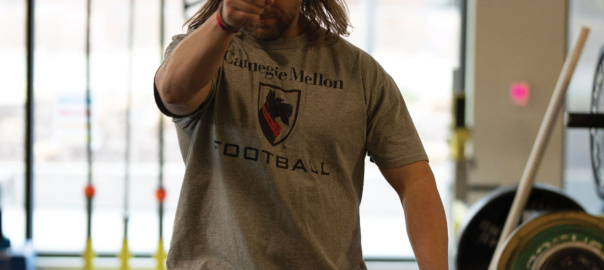I am going to start todays blog by asking you a few questions. I hope these questions create more questions in your head, this will lead to even more questions and maybe one day even an answer or two.
- How do you judge or grade your training session?
- Do you know your goals for each session?
- Can you quantify what you did?
- Do you use subjective or objective metrics in your training?
I am going to answer all of these questions with some history of training. When I first began training (when dinosaurs still roamed the earth), in the 1990’s most people used percentages of 1 rep max to set the workout load for the day. There were some good rules of thumb, for instance we know you can do roughly 10 repetitions at 75% of your 1 rep max. If we were performing 5’s you could begin at 75% and then adjust from up from there. It would look something like 75×5 80×5 85×5 for a top set. This was a very basic way to train and it worked for many people.
As Louie Simmons grew in popularity and Westside Barbell style of training became more mainstream many started using velocity as a metric to judge the workout. Louie reintroduced Prilipen’s Chart to lifters. The goal became move the bar as fast as possible. The weight was important yet how fast the barbell seemed to be moving was the ultimate judge. I remember even going as far as using a stopwatch to time reps. If you didn’t get three reps in three seconds then the weight was too heavy. There are many weaknesses to this way of looking at velocity yet we were figuring things out as we went.
As the idea of velocity in training grew VBT (Velocity Based Training) became the go to for training with speed in mind. Bryan Mann has written extensively about this topic. The use of tend units, speed for lifts, push, and many other brands aided lifters in objectively scoring their acceleration. This was a natural progression, even if at times it lead to ugly form. VBT did give the lifters the opportunity to use an objective metric to judge their lifts. We knew going in what velocity we were looking for and as long as the barbell stayed at or near that number the load was correct. With this method the lifter could make adjustments immediately.
RPE Take Over.
The Borg Scale began as a rating from 6-20. The idea Borg had at the time was this could equate to heart rate. 6 would equal roughly 60 beats per minute, and meant rest. Whereas 20 was 200 beats per minute and was 100% effort. So while training you could ask how do I feel? If the answer was 12 then we’d assume 120 beats per minute.
The Borg Scale grew into todays RPE (Rate of Perceived Exerertion). This scale has been simplified to a 1-10 scale. 1 being rest and 10 being 100% effort. Lifters then began to use this to quantify difficulty of lifts, 1 being rest and 10 being a maximal effort lift. Using the RPE scale gave the lifter a chance to judge, as well as set their load based upon how the weight felt on any given day. This has been great as it is very simple for lifters and coaches to use. At the same time (from what I’ve seen) it has also been a hindrance for many lifters as they are using a completely subjective scale to set the load for the day. With the amount of technology available why not use both a subjective, as well as an objective metrics?
Another weakness I see with using only an RPE scale is it makes the feel more important than reality. I can’t even begin to tell you how many times I have been training and I hit a weight, in my head I think, “I’m done,” then someone calls me out or loads the bar with more. I can taste and smell the fear, and I overcome it all and lift the weight. I am not saying this should be how one trains all the time, I am saying that if I just used RPE then I wouldn’t know what a ten truly feels like.
To take us back to the questions that began this post, the answer to all four is use RPE, use VBT, use percents. I didn’t even touch on the use of heart rate, heart rate variability, sleep data, or the multitude of other data we can use to help with our programming. In short, be sure that you are using both objective as well as subjective data to aid in your programming.

